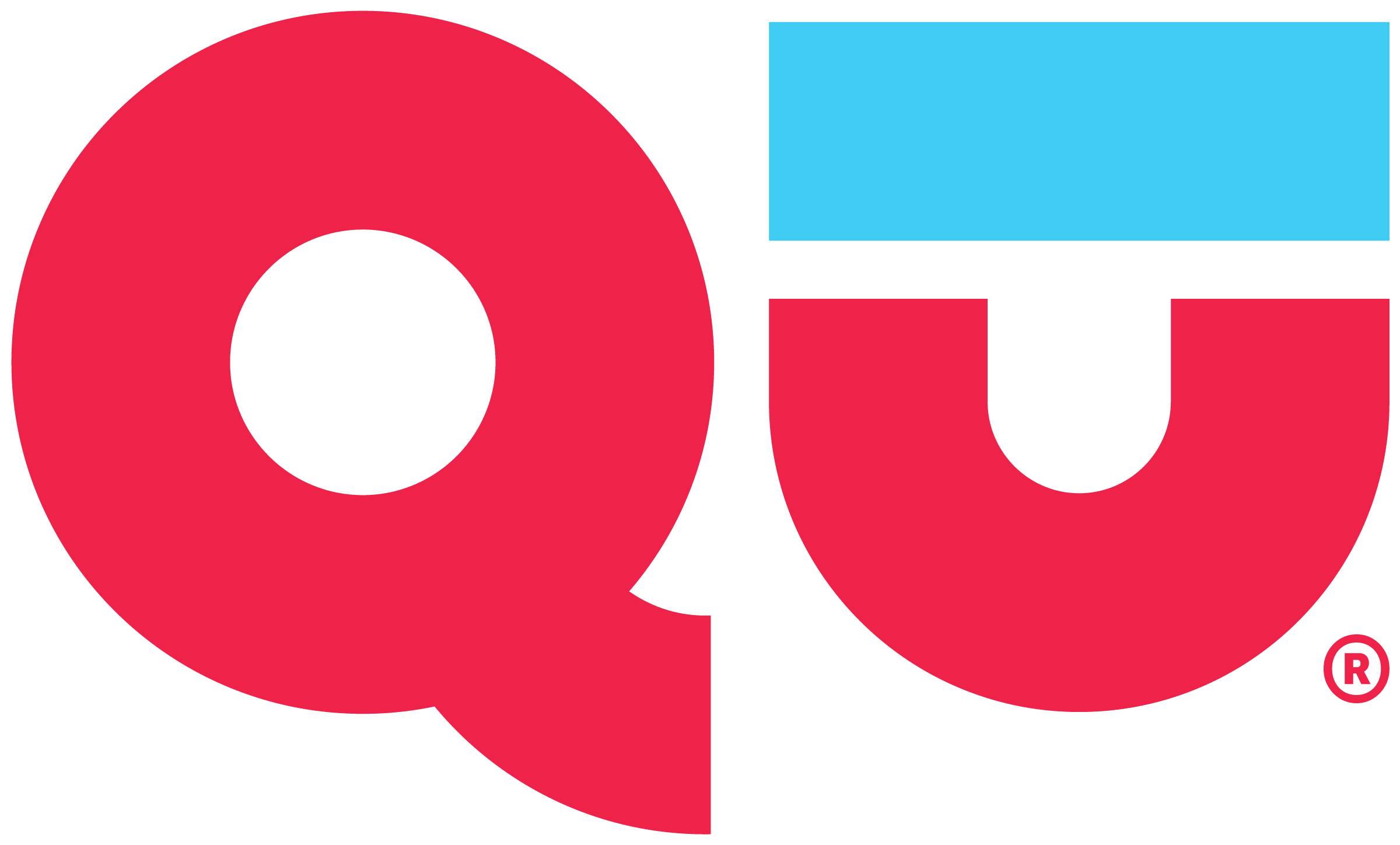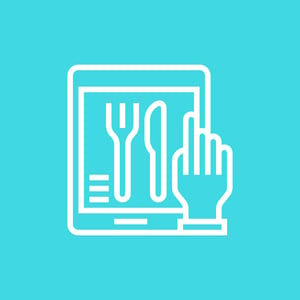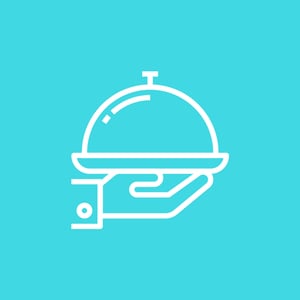The explosion of ordering and delivery channels has led to a host of challenges, especially for enterprise restaurant operators with multiple locations and brands. But the biggest challenge of all is menu management mayhem.
Managing your menus across all the new and expanding order channels has left Quick Service and Fast Casual operators in a technology mess with too many menus and systems to configure, manage, and constantly update. The result is often a disjointed brand experience for guests, inaccurate orders, and inefficient use of restaurant resources.
The New Restaurant Mandate: One Menu Management System
A unified menu management system is no longer a "nice to have" but a critical mandate for bringing efficiency and sanity back to restaurant operators who are adapting to guest preferences for digital and self-service ordering. In this definitive guide, you'll learn everything you need to know about consolidating your menu systems and breaking free from menu overload and fragmentation.
Table of Contents:
The Impact of Digital Disruption on the Enterprise Restaurant Industry
-1.jpeg?width=647&name=AdobeStock_217457384%20(1)-1.jpeg)
Menu management complexity has skyrocketed because of two modern trends:
1. Third-party delivery service providers (DSPs) burst on the scene and gained rapid popularity, but DSPs didn't design their menus to match the same logic and structure as the restaurant's branded menu. In fact, DSP's often require restaurants to use their menu rules—resulting in the need to create a new menu for each delivery partner. Because the DSPs have not prioritized direct integrations with POS companies, who are at the core of the ordering process, larger restaurants had to acquire middleware services to patch together the shaky ordering process.
2. Self-service ordering channels—chiefly web, mobile, and in-store kiosks—have gained significant traction with more guests opting to skip lines for faster digital services. These channels require custom menu builds as well, adding to the already growing list of distinct menu types and systems.
50% of enterprise operators manage 6 different menus and 25% manage 10 or more; according to Qu's 2020 menu management survey.
In addition to these digital disruptions, many large restaurants have grown through mergers and acquisitions, which has resulted in managing multiple POS systems and menus.
It's clear that enterprise restaurants are managing way too many disparate menus and systems—which has led to fragmentation, manual workarounds, and increased spending.
Managing multiple menus has deep consequences for operators:
- Brand and menu inconsistency, confusing and frustrating guests
- Increased technology spend, to unify disparate channels
- Eroding profit margins (top-line and bottom-line)
- Disjointed data and reporting
- Manual processes and workarounds eat up valuable time
- Disappointed guests who hunger for speed and convenience
A new, welcome season of technology innovation is here, and the promise of menu simplification and brand integrity across channels is real. And it all starts with a single, unified menu management system.
What is Unified Menu Management?
A unified, or single menu management system, is one that allows operators to manage one menu system for all their locations, brands, and ordering channels. The menu itself is highly dynamic and configurable, enabling users to make changes to menu items for the differing needs of each order channel, from one centralized place.
Whether you have 20 or 2,000 locations, a unified menu management system improves efficiency, consistency, and flexibility for operators and franchisees. It provides freedom to update menus and food items in just one place, and have those changes inherited across menus, brands, and locations.
Unified Menu Management Helps You:
- Implement changes across channels and locations faster
- Mitigate risk and menu mistakes
- Centralize your data, uncovering trends and revenue opportunities
- Simplify your technology stack, reducing costs and headaches
- Create a superior on- and off-line guest experience
- Retain brand integrity
Core Components of a Unified Menu Management System

Not all single menu management systems are created equal. Qu has pioneered a single menu management system (QU-1MENU) that's grounded in a modern, open micro-services architecture with bi-directional APIs. This translates into a completely integrated menu management system that removes the need for middleware solutions and manual processes.
QU-1MENU goes beyond traditional menu management solutions to give restaurant chain managers unmatched levels of freedom and flexibility. And with great freedom comes great possibility.
“We’re on a mission to end the menu management madness that’s causing massive amounts of fragmentation and inefficiency for enterprise operators today. Fast-casual and quick service restaurants have been constrained for too long by POS solutions that fail to offer the flexibility and control they desperately need to create brand and revenue-boosting guest experiences.”
— Amir Hudda, CEO Qu POS
How is QU-1MENU Different?
There are five core foundational features that make Qu's single menu management system unique:
- One Consistent API Structure - with an API-First, bi-directional API approach
- One Core Processing Engine - to consistently process all orders across channels
- One Centralized Enterprise Management Hub - for all configurations and reporting
- One Database - for a single view of the guest
- Dynamic Items & Dynamic Stores - industry-first capabilities for increased efficiency & flexibility
When evaluating a new menu management system for your brand these five features should be evaluated as must-haves for creating a scalable business and menu system.
At the heart of our newly enhanced single menu management system are two industry firsts: Dynamic Menu Items and Dynamic Stores. Imagine nearly boundless depth for customizing menu items across channels and creating co-branded stores. Want to do some A/B testing of new menu items, promotions, or price points? Go for it!
It’s time to rev up those revenue generating engines and these two essential features will help get you there.
Dynamic Menu Items
Dynamic items are menu items—rooted in a unified menu management system—that can be tagged with unlimited attributes and modifiers. Instead of duplicating your menu item every time you need to modify it slightly for a channel or promotion, you can simply add context tags to the item.
Dynamic items give operators the freedom to customize items, layer multiple dimensions and add attributes based on a menu item’s context—all without ever changing the master item.
Qu is the first enterprise POS company to bring dynamic items to the restaurant technology market. Operators can now configure every menu item to have unlimited dynamic contexts, including tags for:
- Item availability at certain day-parts
- Recurrence (perfect for seasonal items!)
- Order channel specifications
- Order type specifications
- Different pricing across channels
- Limited time offers, promotion, and discounts
- Branded imagery that varies from channel to channel
Dynamic Stores & Categories
Old POS systems made managing your enterprise menus complex, costly, and unwieldy, especially when managing menus across stores. QU-1MENU lets you use more expansive business criteria to create unlimited store groups with infinite depth—and without having to replicate them.
Dynamic stores are a major bonus for large, multi-location brands with franchisees. Where all other solutions limit you to just one rigid category or hierarchy for all store groups, QU-1MENU gives you six independently configurable groups for all of your locations:
- Store locations
- Menus
- Employees
- Tax
- Discounts
- Service charges
Once you add a store to a group, it automatically inherits that group’s attributes—no extra configuring or tweaking needed on your part.
Third-Party Delivery Integrations
Although well intentioned, third-party delivery created three massive problems for operators:
- Menu Management Mayhem. Third-party delivery providers introduced their own individual menu system into the mix of already burgeoning order channels for operators. More menu systems meant more chaos and a disjointed ordering experience.
- Tablet Hell. Each delivery company placed a physical tablet in the restaurant to process orders. This created crowded countertops (“tablet hell”) and more in-store labor to manage the manual process of printing delivery orders and inputting them directly into the in-store POS.
- Manual and Inaccurate Order Entry (+Annoyed Guests). The process of printing and re-keying the delivery orders from tablets to the in-store POS make order errors more likely through things like “fat-fingering” or human error.

Unlike other POS companies, Qu has embraced native and direct integrations using bi-directional APIs with third-party delivery providers. Our streamlined approach is rooted in one single dataset, pushed and pulled from the native delivery sites, ensuring the integrity of your menu stays in tact.
This is all made possible by Qu's modern, open architecture that's founded on one database with one consistent API layer that wraps around a centralized core processing engine. No more delivery drama.
Benefits of Qu-1MENU Single Menu Management System

| DELIGHT GUESTS | WIN WITH INSIGHTS | DRIVE PROFITABILITY |
|---|---|---|
| A fast, reliable, and intuitive ordering experience for all of your guests | You finally have the control to manage your data and get the insights you need. | Save valuable resources, time, and money to contribute to your bottom line. |
In addition to the above, key benefits include:
- Improve your bottom-line by reducing management costs, accelerating speed to market, and increasing customer satisfaction
- Improve decision-making by tracking and reporting data more holistically
- Avoid duplicating menu items with dynamic items that can be tagged with unlimited context across the enterprise and individual stores
- Create dynamic store groupings based on categories of similar data needing to be updated (i.e., discounts for low-performing stores, or seasonal items for specific locations)
- Easily access analytics on the performance of certain menu items to drive business decisions
- Provide unified brand and ordering experiences for guests across all channels

How to Implement a Unified Menu Management System

Start with the end in mind to get one view of the customer.
The best results come from a unified POS menu built on strong digital foundation with a single API structure and one database. Our Qu-1MENU sits atop a single powerful core processing engine.
Having a singular core allows you to move beyond traditional POS approaches, so all changes, orders, and transactions are processed the same way from one place and carried out across all channels, locations, and brands as directed.
Qu’s core is replicated both in-store and in the cloud, so data is constantly in sync, with 24x7 reliability, and continual business operations — regardless of internet or cloud connectivity. Data is more secure since it’s not all sitting exclusively on in-store servers.
With a single core engine, like Qu's, it eliminates the need for extra layers and levels of data translation, including middleware solutions. Enterprise restaurant operators finally have the opportunity to truly consolidate their Front of House solutions and deliver a more consistent, cohesive guest experience. And best of all, with a completely unified system, they get access to one view of the guest.
Use Case: Unified Menu Management in Action
The real-life benefits are beyond tangible for brands using a unified menu menu management platform.
Luke’s Lobster is one such brand. To continue on their road to a frictionless guest experience, Luke’s is implementing a unified restaurant menu management system with Qu that’ll cut the amount of time spent on editing multiple menus across multiple channels. The in-store POS and digital order channels are pull from one single menu.
Check out Luke's updated Online Ordering Site.
Making edits one time in a unified POS menu is a game-changing capability that enables key resources to engage higher-impact aspects of the business.
Ben Conniff, Co-Founder and CMO at Luke’s recently, shared, “One of the smartest and hardest-working people on our team spends so much time editing multiple menus across multiple channels, making the same change in five different ways, for five different parties.”
“When you think about what she could be doing with that time...she could help us evolve and improve other parts of our business. With our new menu system, we look forward to her making one change, one time, in one system.” said Ben.

.png?width=250&height=291&name=new%20(1).png)












